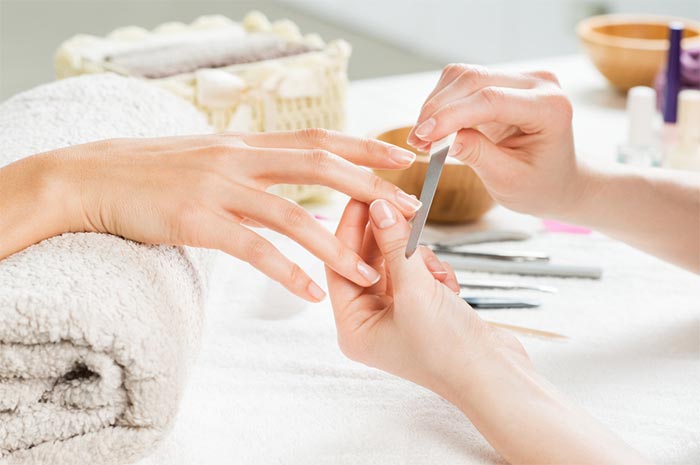Maintaining healthy, neat and clean nails is a part of personal hygiene. Seemingly, this is a simple task. However, picking up unpleasant nail infection is quite easy. Among the common bacterial nail, infections include Pseudomonas and paronychia. Picking up such infections should not worry you. Despite being quite common, eliminating them is also easy.
Causes of nail bacterial infections
Bacterial infections of the nail are predisposed by various factors. This is the reason why they are common. Moist environments including waters and soil are good breeding grounds for these bacteria. Therefore, activities such as cooking, gardening and cleaning predispose to these infections. Soil, water, and vegetation harbor the bacteria. Constant contact with these items increase chances of acquiring the disease.
Once the bacteria get trapped under the nail bed, infections occur. Using nail implements including buffers and files, and artificial nail coatings also compromise the nail structure and may result in bacterial infection. You can also acquire these infections from poorly sterilized nail equipment and salons.
Appearance of pseudomonas and paronychia infections
Picking up these infections is quite easy. However, observing full nail care tips can help you avoid such common bacterial infections. Understanding the appearance of these infections is preliminary to initiating appropriate measures. Pseudomonas, also referred to as the green infection or greenies, is an invasion by Pseudomonas aeruginosa. Infected nails appear as gray stains or as unnatural green. This is due to iron deposits on the nail bed. The nails also become moist and soft. On the other hand, paronychia, which can be acute or chronic, exhibit red, painful and swollen proximal nail fold that occasionally contain pus.
Prevention strategies
Prevention is better than cure. Creating a proper nail care routine inclusive of all nail care tips is of immense importance. At times, these infections can be stubborn. Avoiding the whole infectious process should, therefore, be a priority concern. You should develop well-articulated self-care guidelines to help you prevent the infections. There are several prevention techniques for these infections. They include:
- Removing dirt under acrylics – Many women opt for acrylic nails to enhance their nail appearance. Acrylic nails cover the regular nail. Acrylics are strong and often hard to come out. Due to this, they can accumulate dirt between the two structures. Such can be a good bacterial breeding ground. You should, therefore, ensure that underneath your acrylic is always clean. Consult professionals if you find this activity daunting.
- Disinfecting tools properly – You definitely have various tools for nail care. Though helpful, these tools can be a source of infection. Without proper disinfection, they can transmit bacterial infections to the nails. Use strong disinfectants therefore to clean these tools. Follow the proper guide on how to disinfect nail care tools.
- Frequent hand washing – Most people overlook the importance of doing frequent hand washing. Using soap and alcohol sanitizer when cleaning your hand has been proved to be effective in preventing bacterial infections. Alcohol specifically is known for keeping bacteria at bay.
- Consider using disposable buffers and nail files – This will limit recurrence of infections that may occur with reusing the equipment.
- For artificial nail enhancements, avoid gluing cracked pieces – You should also clean the nail surface properly with a disinfectant before fixing the enhancement. If a cracked piece falls off, have the whole enhancement removed. This is because the crack can provide good bacterial breeding pockets.
- Choose a good nail salon – Proper choice of a nail salon also aids in preventing nail infections. When searching for a salon, always ensure that they practice proper sanitation standards and maintain good hygiene.
- For paronychia, avoid water and chemical exposure – If you must, use protective devices such as gloves.
Treatment
If prevention fails, treating the bacterial infection can keep bacteria out of your nail. Despite the infection not being a major health challenge, contacting a dermatologist for treatment is important. This is because the infected nail is usually unsightly. Various methods of curbing the infection are available. They include the following:
- Topical antibiotics including bacitracin and polymyxin B can be prescribed.
- Oral antibiotics such as ciprofloxacin can also be prescribed.
- Chlorine bleach used in the ration of 1:4 with water to suppress the infection.
- Vinegar Gel
Note that it is important, during the treatment period, to avoid any artificial nail enhancements.
Conclusion
Infection with unsightly bacterial infection of the nail is common. Good news is that they can be easily prevented and eradicated. Observing proper nail care coupled with the prevention strategies highlighted above will see you through a healthy nail experience. Besides bacterial infections, fungal infections are also common. However, prevention strategies for both conditions are similar.

